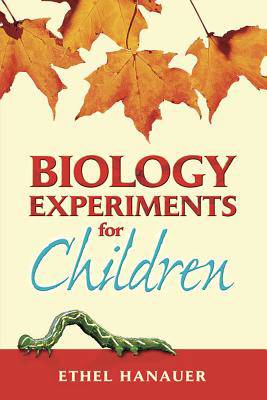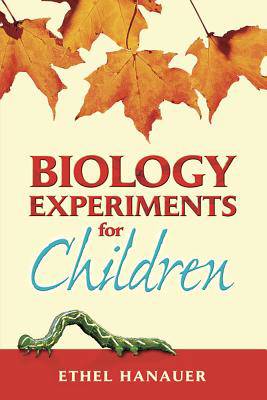
- Afhalen na 1 uur in een winkel met voorraad
- Gratis thuislevering in België vanaf € 30
- Ruim aanbod met 7 miljoen producten
- Afhalen na 1 uur in een winkel met voorraad
- Gratis thuislevering in België vanaf € 30
- Ruim aanbod met 7 miljoen producten
Zoeken
€ 6,45
+ 12 punten
Omschrijving
What better way is there to learn than by doing? This unusual book enables children to carry out more than 77 different experiments and demonstrations, carefully planned to illustrate important principles of modern science. Clear step-by-step instructions, frequent diagrams, clear statements of conclusions all enable the young student to carry through these experiments with minimal supervision, yet full success.
The book is divided into four parts. The first part, The Nature of All Living Things, introduces cells and discusses how to use the microscope to observe a variety of living things. The other three parts, The World of Plants, The World of Animals, and The Human Animal, systematically investigate plant and animal life, answering such questions as why and how plants and animals live and grow, why leaves are actually food factories, why all living things need sunlight, and how you can raise plants without seeds. The experiments provide first-hand experience with growing one-celled animals and bacteria, building a terrarium, observing the binding force of roots, growing seeds in a sponge, learning why a spider spins a web, why a fish has gills, how certain plants live on insects, and other fascinating facts about plants and animals. The basic piece of equipment for these experiments is a microscope. Specimens for examination can be found in and around the home.
This volume offers upper grade school, junior high school, and high school students a very entertaining way to enrich their background in science and its applications. It is also a very valuable aid to parents, teachers, and others who wish to make clear, forceful demonstrations to children.
The book is divided into four parts. The first part, The Nature of All Living Things, introduces cells and discusses how to use the microscope to observe a variety of living things. The other three parts, The World of Plants, The World of Animals, and The Human Animal, systematically investigate plant and animal life, answering such questions as why and how plants and animals live and grow, why leaves are actually food factories, why all living things need sunlight, and how you can raise plants without seeds. The experiments provide first-hand experience with growing one-celled animals and bacteria, building a terrarium, observing the binding force of roots, growing seeds in a sponge, learning why a spider spins a web, why a fish has gills, how certain plants live on insects, and other fascinating facts about plants and animals. The basic piece of equipment for these experiments is a microscope. Specimens for examination can be found in and around the home.
This volume offers upper grade school, junior high school, and high school students a very entertaining way to enrich their background in science and its applications. It is also a very valuable aid to parents, teachers, and others who wish to make clear, forceful demonstrations to children.
Specificaties
Betrokkenen
- Auteur(s):
- Uitgeverij:
Inhoud
- Aantal bladzijden:
- 96
- Taal:
- Engels
- Reeks:
Eigenschappen
- Productcode (EAN):
- 9780486220321
- Verschijningsdatum:
- 1/06/1968
- Uitvoering:
- Paperback
- Formaat:
- Trade paperback (VS)
- Afmetingen:
- 156 mm x 235 mm
- Gewicht:
- 145 g

Alleen bij Standaard Boekhandel
+ 12 punten op je klantenkaart van Standaard Boekhandel
Beoordelingen
We publiceren alleen reviews die voldoen aan de voorwaarden voor reviews. Bekijk onze voorwaarden voor reviews.








